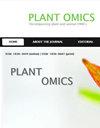Estimates of heterosis and combining ability of soybean diallel crossings
Q3 Agricultural and Biological Sciences
引用次数: 2
Abstract
This study aimed to estimate the general and specific combining ability of partial soybean diallel crossings. The parents were divided in two groups contrasting for the characteristics of mass of thousand seeds, maturity group, flowers’ color, lodging and growth aspect. The scheme of partial diallel followed the Griffing model, where it were included the parents and the F1 generation. There was predominance of additive genic effects for the characteristics number of seeds per pods, number of seeds per plant and plants height. For number of pods per plant, seeds per plant and mass of hundred seeds the dominance effects were expressed by the superiority of specific combining ability in the determination of these characters. The parents G3 and G7 were the ones that contributed the most to the increase in yield in function of general combining ability for the characters number of pods per plant, seeds per plant, plant yield and mass of hundred seeds. The hybrids from the crossings between G3 x G5 and G3 x G4 are more promising for the characteristics related to yield, since they present elevated heterosis effect and high specific combining ability associated to increase general combining ability presented by the parent G3.大豆双列杂交的杂种优势和配合力评价
本研究旨在估计大豆部分双列杂交的一般配合力和特殊配合力。根据千粒重、成熟期、花色、倒伏和生长特征,将亲本分为两组。部分双列配型采用Griffing模型,包括亲本和F1代。单荚种子数、单株种子数和株高性状的加性遗传效应显著。单株荚果数、单株种子数和百粒质量的显性效应表现为特定配合力的优势。亲本G3和G7在单株荚果数、单株种子数、单株产量和百粒质量等性状的一般配合力函数上对增产贡献最大。G3 × G5和G3 × G4的杂交组合在产量相关性状上更有潜力,因为它们具有较高的杂种优势效应和较高的特异性配合力,与提高亲本G3的一般配合力有关。
本文章由计算机程序翻译,如有差异,请以英文原文为准。
求助全文
约1分钟内获得全文
求助全文
来源期刊

Plant Omics
生物-植物科学
CiteScore
1.30
自引率
0.00%
发文量
0
审稿时长
6 months
期刊介绍:
Plant OMICS is an international, peer-reviewed publication that gathers and disseminates fundamental and applied knowledge in almost all area of molecular plant and animal biology, particularly OMICS-es including:
Coverage extends to the most corners of plant and animal biology, including molecular biology, genetics, functional and non-functional molecular breeding and physiology, developmental biology, and new technologies such as vaccines. This journal also covers the combination of many areas of molecular plant and animal biology. Plant Omics is also exteremely interested in molecular aspects of stress biology in plants and animals, including molecular physiology.
 求助内容:
求助内容: 应助结果提醒方式:
应助结果提醒方式:


